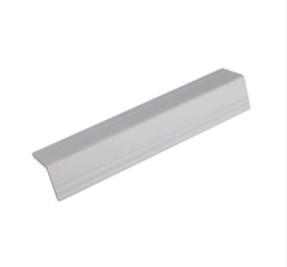Polystyrene (PS) mouldings are a ubiquitous presence in the modern world, renowned for their lightweight, rigidity, and cost-effectiveness. However, the environmental impact of PS mouldings and their production process has become a topic of increasing concern. This article aims to explore the ecological implications of using PS mouldings and discuss the potential for environmentally friendly alternatives.
The production of PS mouldings begins with the polymerization of styrene monomers, a process that involves chemical reactions and energy-intensive procedures. The environmental impact of PS mouldings can be categorized into several areas, including the consumption of non-renewable resources, the release of volatile organic compounds (VOCs) during production, and the challenges associated with recycling and waste management.
The use of non-renewable resources, such as petroleum, to produce the raw materials for PS mouldings is a significant concern. As the global demand for plastics increases, so does the pressure on these finite resources. Moreover, the production process can release VOCs, which contribute to air pollution and can have adverse effects on human health and the environment.
One of the most pressing issues with PS mouldings is their persistence in the environment after disposal. Traditional PS mouldings are not biodegradable and can take hundreds of years to break down. This leads to widespread littering, commonly seen in oceans and other natural habitats, where they can harm wildlife and disrupt ecosystems.
Recognizing these environmental challenges, there is a growing interest in finding eco-friendly alternatives to PS mouldings. Several options are being explored:
1. Biodegradable Polymers: Researchers are developing biodegradable polymers that can serve as alternatives to PS. These materials are designed to break down more quickly and harmlessly in the environment, reducing their long-term impact.
2. Recycled PS: Some manufacturers are focusing on the use of recycled polystyrene to produce mouldings. This approach reduces the need for new raw materials and the associated environmental costs.
3. Bio-based PS: Another alternative is to use bio-based materials to produce PS mouldings. Bio-based plastics can be made from renewable resources like corn starch or sugarcane, which have a lower carbon footprint compared to petroleum-based plastics.
4. Reusable and Recyclable Design: Manufacturers are also looking into designing PS mouldings that are more easily recyclable or are intended for single-use applications where they can be reused multiple times, thus reducing waste.
5. Additives for Enhanced Degradation: Some companies are experimenting with additives that can be mixed with PS to accelerate its degradation when exposed to environmental conditions like sunlight or heat.
It is important to note that while these alternatives show promise, they also come with their own set of challenges, such as higher production costs, varying degrees of biodegradability, and the need for further research to ensure they do not introduce new environmental problems.
In conclusion, the environmental impact of PS mouldings is a multifaceted issue that requires a concerted effort from manufacturers, policymakers, and consumers. By seeking out and supporting the development and use of eco-friendly alternatives, we can work towards a more sustainable future where our need for versatile materials does not come at the expense of our planet. The transition to greener alternatives may be gradual, but it is a necessary step in the ongoing journey towards environmental sustainability.



